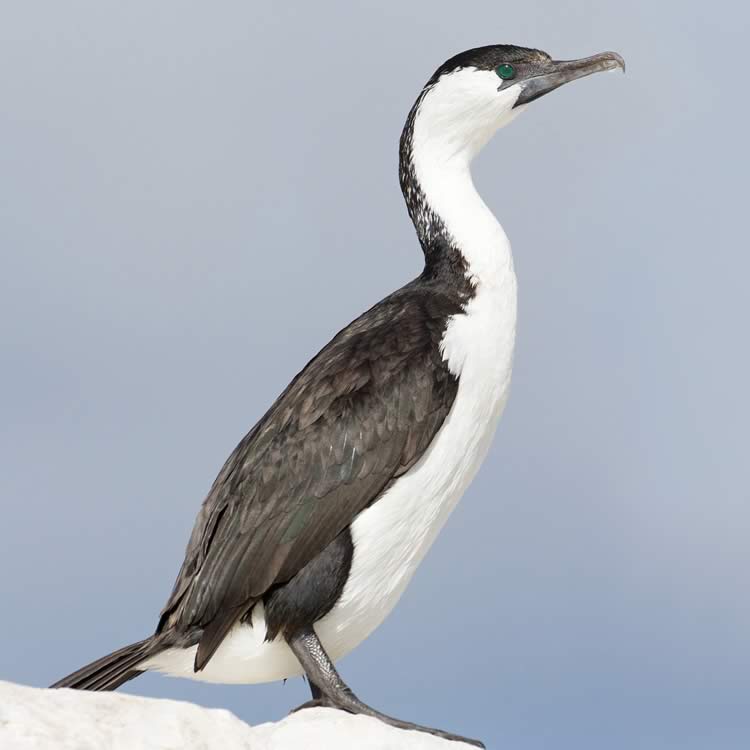Black-faced cormorant

Community type
Habitat type
One of the most common cormorant species in Tasmania, the black-faced cormorant is a regular sight in the Derwent Estuary all year. They nest in colonies on exposed rocky islands or coastal cliffs, and roost on jetties, islands and snagged trees.
Black-faced cormorants are good divers, and can hold their breath for up to 60 seconds. This enables them to dive to the bottom of the Derwent Estuary in pursuit of prey. They mainly eat small fish like baitfish and juvenile leatherjackets. Unlike other cormorants, they are largely marine. In fact they have a larger nasal salt gland than any other cormorants, so they can live exclusively on marine prey.
